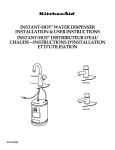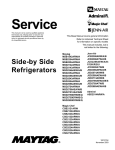Download consumer guide - Solar Educators
Transcript
2 DISCLAIMER No part of this book may be reproduced or transmitted in any form, or by any means, without written permission from the author. Published by BEXSI Publishing, USA www.AuthorYourBrand.com The opinions expressed by the author are not necessarily those of Bexsi Publishing, LLC. This book is designed to provide accurate and authoritative information with regards to the subject matter covered. This information is given with the understanding that neither the author nor Bexsi Publishing, LLC, is engaged in rendering legal, professional advice. Since the details of your situation are fact dependent, you should additionally seek the services of a competent medical, financial or other professional. Copyright © 2014 www.Bexsi.org 3 Table of Contents Introduction …………………………………………………….5 Solar Industry: The time has come……………….9 Pitfalls of Solar It’s simple, not easy……………12 Getting Started Your 21-point checklist……….15 Own or Lease? Bonus ……………………………………..........................22 Appendix Equity & options……………………19 …………..........................................28 4 Introduction Your home pollutes. Don’t despair, ALL homes pollute. In order to live in society, we must consume enrgy and most energy pollutes. While many of us don’t think about specifically about the energy required or pollution created to power our office, deliver our cereal or create that can of paint we purchased, we are painfully aware of how energy is purchased, used and wasted when it comes to our homes. Because we see and pay that bill monthly. The energy we use to run a typical American home is 10,837 kWh (kilowatt hours) according to the US Energy administration. Chances are, as a homeowner, you know exactly how that equates to your monthly expenses. Ouch. For many homeowners who enjoy the clear skies and warm sun of warmer climates, the downside can be excessive cooling bills. We just moved back to AZ from IL and were shocked at our August bill through APS. Total bill was $450.96, but only $287.02 was the generation of electricity (2477 kWh). The rest of the bill makes up of various fees, such as metering, billing, delivery charges, taxes, etc. We live in an 1800 sqft, single story house, 2 adults, 2 young children going in and out during the day. We run at least 2 ceiling fans at all times to cool the master bdrm and office. -Christina G. Phoenix, AZ 5 Try as you might, reducing your expenses can be challenging. Your current electrical usage isn’t simply a matter of kilowatt hours (kWh) and a smattering of government taxes. Electric Bills Can Vary With... • Location and altitude of your home • Size of your home and how many floors • Type of home construction and insulation • Age of your home • Type of insulation and how it was installed • Style and age of your roof • Number of rooms, their size and layout • Exposure of walls and window to the sun • Placement and operation of ceiling fans • Window treatments and their proper usage • Number of people living in house • Number of pets and their habits • Air conditioning systems, age and use • Presence of evaporative cooling • Age and quality of air conditioning systems or heat pump • Type and size of water heater • Presence of an attic, loft and/or basement • Pool and/or spa size, use, motor systems and age • Thermostat settings, timers and lifestyle What a dizzying amount of variables! 6 Before you throw up your hands in aggravation or go out and talk to an air conditioning sales representative, take a step back, use this guide and take a systematic and thorough approach to your goals. You may be interested in simply reducing your costs a bit and move on. For the wise homeowner, the alluring idea of drastically reducing or even eliminating your electrical bill is enticing enough to read on. 1. Where do you start? 2. What is the best way to reduce your costs? In the bonus section, we provide a list of small (and not so small) things you can do to reduce your energy expenditures and save money. Regardless of how you approach energy consumption, the tips in the bonus section can save you hundreds of dollars per year. While many of these items, over time, can add up to significant savings, there is only one solution that can eliminate your bill almost entirely. FACTOID: The average vehicle travels over 15,000 miles per year which equates to 4.5 TONS of carbon dioxide emissions. A 3.5kW, grid-connected home solar system eliminates the same amount of coal-fired emissions. While shaving a few pennies here or there can add up and should not be ignored, more and more homeowners have discovered a strategy to stop worrying about the pennies and slay the big dragon with one swift stroke. When it comes to making a BIG difference in the environment and re- 7 directing your utility dollars to equity, there is one clear choice that will create the most significant impact. Solar. Imagine not having to monitor your doggy door or inspect the leaks in your home? Many people spend countless hours and throw away thousands of dollars in upgrades to their A/C systems in order to shave $11 dollars a year off of their utility bill. The return on their investment is painfully slow and by the time any progress has been made, (sometimes decades later) another, new upgrade is required. Converting your home to solar can replace hundreds of hours of doing all those little things to save a few dollars. In a single, confident and educated decision, you may be able to go off the grid. With a properly designed and installed solar energy program, you can have the independence, peace of mind of being more selfsufficient. As a bonus, you’ll be building an asset that increases your home’s value as opposed to incurring an ongoing monthly liability. With the right system in place, you will not only redirect your energy expenses to creating an asset, the ripple effect of your decision will improve the quality of life for you, your children and generations yet unborn. 8 Solar Industry Don’t think for a second that your educated decision to consider solar is insignificant. For every homeowner that makes the move to solar, 100 more are watching and considering doing the same thing. Solar energy use has surged 20 percent a year over the past 15 years, thanks to rapidly falling prices and gains in efficiency. Japan, Germany, and the United States are major markets for the manufacturing and distribution of solar cells. The industry is booming. According to a recent survey from the Solar Foundation, the growth of this industry is outpacing fossil fuels by a healthy margin. In 2013: • Jobs in the overall economy grew by a mere 0.7%. • Fossil fuel electric generation lost 2% of its workforce. • Solar employed over 142,000 workers. Chances are, you already know someone or have driven past their house with those clean solar cells soaking up the free energy from the sun. 9 When it comes to considering solar for your home, where do you start? You certainly have many options and each one has its pros and cons. This guide will help you navigate your choices and narrow down the best set of choices based on your needs, circumstances and goals. There are commercial, residential and 3rd world systems for using solar energy. This guide will focus on residential applications for homeowners. If you are camping, have a summer home or volunteer globally, and want to bring the gift of the sun with you, there are dozens of alternatives to homeowner-based systems noted in the appendix. Water heating Solar hot water systems use sunlight to direcly or indirectly heat water. The most common types of solar water heaters are evacuated tube collectors and glazed flat plate collectors. Unglazed plastic 10 collectors are used mainly to heat swimming pools. Photovalic cells Photovalic cells electrical power by converting solar radiation directly into electricity by the use of semiconductors. Photovalic cells are normally installed on a grid to create a solar panel. Advances in technology, manufacturing scale and need, has driven the cost of photovalics through the floor. What was once an expensive energy source for the space shuttle is now commonly used by savvy homeonwers. Photovoltaics recoup the energy needed to manufacture them in 3 to 4 years. New technologies will reduce time needed to recoup the cost even further. The focus of this guide will be on photovalic energy (sunlight to electricity). For more information on water heating systems, see the appendix section of this guide. 11 Pitfalls of Solar Going “green” isn’t all rainbows and unicorns. With a global effort to environmental awareness and action, plenty of myths and mistakes surface for the uninformed consumer. Location Of course, climates that have an excessive amount of overcast aren’t great candidates for current solar applications. However, even in climates with plenty of sunshine, the location of your solar panels is paramount to optimizing their performance. If your location isn’t conducive to maximizing the sun’s exposure, solar may not be a good fit for you. 12 A consultation with a reputable distributor and installer will give you the information necessary to see if your area qualifies for solar. Space The physical space required for your photovalics and supporting equipment will also determine your eligibility. Roof size, strength and orientation to the sun must be measured and calculated to insure your photovalic installation will be sound, practical and functional. A reputable installer will have full knowledge of your local buildling ordinaces, codes and requirements. Under no circumstances, should you work with a company who does not have the credentials for photovalic installation. Net Metering Once you have elected to go “green” and go solar, there will be agreements between your utility company and you. A “Net Metering” agreement allows you to not only power your own home, but produce extra electricity that can be sold back to the utility. Systems that do this connect not only to your home’s electrical system, but the local utility grid. Net metering is not univeral across the country, so be sure to ask your provider for details. Investment The power from the Sun is free, but harnessing and managing it is not. Some homeowners, put off by the expense of purchasing photovalics, elect to lease their equipment. Leasing may slightly reduce your monthly cost of owning your own equipment, but you 13 also lose a large degree of control and retain no equity in the equipment. Knowledge Of all these pitfalls, knowledge (or a lack of reliable knowledge) is the #1 cause for disatisfaction with solarizing your home. The reason we wrote this guide was to alleviate the misinformation regarding solar. There are “good guys” and “bad guys” in any industry and solar is not insulated from the sharks out there. For independent research and information, we have listed more resources for you in the appendix. Provided you can manage and avoid these 5 major pitfalls, you will be well prepared to consider and qualify for solar energy to power your home. Buyer Beware A lack of due diligence by consumers can be quite costly. The explosion of alternative energy also draws out some of the more unsavory characters in business. The problem isn’t regional either. In the UK, for example, Mrs Hammett, 66, a former secretary, paid a solar installation firm, more than $13,500 for solar panels at her bungalow outside Bournemouth, England. The system, she was promised, would slash her gas and electric bills by 70 per cent. It was a lie. “It ended up costing me more,” she said. She is not alone. Other elderly customers suffered a similar fate. The vast majority of victims are middle class and many are pensioners, like Wendy Hammett living in retirement towns, where the more temperate weather means solar power is becoming increasingly popular. 14 Getting Started Below is a process to help you navigate your options: Assessement 1. Do your due diligence on your area. Is your area conducive to solar? 2. Does your city/county or region have codes & standards for solar? 3. Compile your energy bills and know what you spend monthly. Research NOTE: Use the following 21-point due diligence checklist below to weed out companies who don’t qualify. Engage with a company that can positively answer all 21 questions. Does your intended distributor/installer meet the following criteria: Can they provide 3 or more local references you can call, drive by and verify? Yes_______ No_________ Name Address If Yes, List below: Phone _____________________________________________________________ _____________________________________________________________ _____________________________________________________________ _____________________________________________________________ _____________________________________________________________ 15 Have they been approved by the city/county for solar installation? No_________ Yes__________ Verfied_____________ Do they have agreements in place with the power company for “Net Metering?” No_________ Yes__________ Verfied_____________ Are they licensed, bonded & insured installers (verify certificates)? No_________ Yes__________ Verfied_____________ Can they provide financing based on your credit & home ownership? No_________ Yes__________ Verfied_____________ Can they provide local phone numbers for communication with representatives? No_________ Yes__________ Verfied____________ Do they have a local office in your area? No_________ Yes__________ Verfied_____________ Can they provide data sheets and quality standards for equipment installed? No_________ Yes__________ Verfied____________ Are their installers given proper training and support? 16 No_________ Yes__________ Verfied____________ Do they provide a warranty on photovalic materials in excess of 20 years? No_________ Yes__________ Verfied____________ Do you get warranties on other components for 10+ years? No_________ Yes__________ Verfied____________ Do you get an ESTIMATE on savings & ROI projections? No_________ Yes__________ Verfied____________ Do they NOT say or provide in writing guarntees on ROI? No_________ Yes__________ Verfied____________ Do they supply current state and Federal tax rebates & credits? No_________ Yes__________ Verfied____________ Will they deliver a comprehensive quote with specifications for size, quantity, power, capacity, output, rating and manufacturing data on: Verified • Solar panels ______________ • Mounting hardware ______________ • Inverter & non-photovalic ______________ • Any additional metering ______________ • Data services ______________ • Any digging or in-ground work ______________ 17 Do they provide a user manual for your equipment? No_________ Yes__________ Verfied____________ Does your quote include a complete price, APR and payment? No_________ Yes__________ Verfied____________ Do they provide legal documents for financing? Is loan transferable? No_________ Yes__________ Verfied____________ Does your quote include installation date & estimated time to complete? No_________ Yes__________ Verfied____________ Who is responsible for tax incentive paperwork? You_________ Them__________ Verfied____________ Who is responsible for communication with the utility company? You_________ Them__________ Verfied____________ When your selected distributor/installer has satisfactorily answered these questions, you should be comfortable making the decision to “Go Solar!” However, there may still be a few forks in the road in your decisionmaking process. Specifically, should you own your own equipment? 18 NOTE: This guide is by no means meant to advise you on your financial situation or how solar energy will impact your taxes. Please consult your tax professional for advice and direction when it comes to government sponsored credits, taxes and your finances. Own or lease? For many businesses, it makes sense to lease vs. own equipment. This is almost entirely due to the cash flow and tax advantages of the business. When they add depreciation into their calculations, equipment leasing becomes the better financial option. For businesses. When it comes to homeowners, the rules are a bit different. Leasing solar panels has been promoted as a viable alternative to purchasing by many companies. Why? Despite recent drops in the investment of solar photovalics, solar panels installed in your home last a long time and will qualify as an asset. This is a good thing, as it can add value to your home, provided you own the asset. In the case of third-party solar systems that are leased, the homeowners get the benefits of solar power, but none of the equity benefits of ownership. 19 What is Third-Party Owned Solar Power? Third party owned (TPO for short) involves a solar provider that delivers and installs a solar energy system. The typical homeowner still gets a lower electricity bill without any upfront capital costs. Since they do not own the equipment, they are obligated to pay a monthly leasing fee to the provider. Financing can be provided by a solar installer, a manufacturer, the utility company or another source. As of this writing, thirteen states have authorized third-party ownership of solar power. In California, for example, TPO accounts for 74% of residential solar installations. It has been reported that third-party ownership of solar home systems could increase to 83% of solar capacity in the USA by the year 2016. There are drawbacks, to leasing, however. For many homeowners, one of the primary advantages of solar power is energy independence from the utility company. With rooftop or groundmounted Photovalic systems, homeowners generate their own power. With the right system and climate, systems now can even create MORE power than the home requires. Where does this exces energy go? In self-contained systems, battery back-up and charging components are connected with your photovalics. With other systems, the excess power is sold back to the utility company. With leased equipment, this potential revenue stream is normally not allocated to the Lessee of the equipment. (The homeowner loses) 20 Leasing Solar Panels Creates Debt When solar systems are purchased and owned by you, the homeowner, you’ve added value to your home. Markeing studies have shown, time and time again, that for every dollar you invest in a solar system, the value of your home approximately increases by a dollar. Therefore, a $15,000 dollar system will yield an increase of $15,000 to your home’s equity. Leased solar panel systems, on the other hand, add no equity to your home. In fact, many leased systems will cause homeowners to incur a debt liability. With the real estate market in constant volatility, additional debt (without the asset) can easily taint or reduce your homes value. If you sell your home, since you no longer reside with the leased equipment, the new homeowner must negotiate their own agreement or break the lease. In some cases, breaking leases like these can incur substantial fines. Leasing solar panels, reduces or eliminates many of the advantages that come with ownership. Tax credits, equity, and resell rights are just a few examples of benefits lessee’s give up in exchange for leasing vs. owning. Why lease a solar system when you can buy your own and redirect your monthly utility expense to an appreciating asset? 21 BONUS Regardless of your ability or desire to transfer your current expenditure of utility bills into a verifiable asset in your home, we all want to save more money. Below are a few common sense, (but rarely optimized) strategies to reduce energy consumption, lower your bills and create a greener world. There are many easy things that you can do right away. Others will show their benefit over time. Some are even FREE! 1. Minimize Phantom Loads The term “phantom load” refers to the energy that an appliance or electronic device consumes when it is not actually turned on. According to the U.S. Department of Energy (DOE), “75 percent of the electricity used to power home electronics is consumed while the products are turned off.” While that is hard to believe, the University of California (Berkeley) research showed phantom loads accounting for a whopping 6% all residential electricity consumption in the USA. Eliminate phantom loads by simply unplugging appliances and electronics when they are not being used. This may be annoying with dozens of appliances. Consider using power strips, By flipping the power strip button, you control 2 or more appliances with a single switch. The power strip acts as a buffer and cuts off the phantom load from individual appliances. 22 2. Energy-efficient Appliances When shopping for new appliances, insure the Environmental Protection Agency’s Energy Star label is clearly marked on the appliance (not just on the outside of the box). Energy Star rated appliances generally consume 10 to 50 percent less energy and water than non-certified equivalents. In many cases, the initial investment is higher with these appliances. Don’t be discouraged, however, you’ll see on the label the average annual dollar and energy savings by investing in these more efficient units. For most appliances, the increased investment is recouped in a handful of years or sooner. 3. Upgrade Your Light Bulbs One of the least expensive and most inocuous changes you can make in your home to reduce your energy bill is upgrading your light bulbs. According to Energy Star (www.energystar.gov) a rated, compact fluorescent light bulbs (CFL for short), saves approximately $30 over the life of the bulb. CFL’s pay for for themselves (price divided by savings) in about 6 months. CFL’s use about 75% less energy than incandescent bulbs and lasts about 10x longer. While there is genuine concern over CFL’s because they contain the element mercury, Energy Star claims CFLs are safe. No mercury is released when bulbs are in use. From a total net output of mercury, CFL’s reduce overall mercury emissions. This is due to the fact that 23 CFL’s reduce the need for electric power provided by fossil-fueld power plants. This overall reduction from our utiliites is a net reduction in mercury pollution because power plants emit more mercury, as a percentage than CFL’s ever could. 4. Install a Programmable Thermostat Your thermostat regulates the overall temperature in your home. You set the temperature to your liking and your system heat or cools your house until the thermometer matches your setting. Programmable thermostats automatically adjusting your home’s temperature to your lifestyle. Are you out during the day and home at night and on the weekends? A programmable thermostat can adjust to your circumstances by reducing the power draw when you are not at home. Properly programed thermostats can reduce your heating and cooling costs by as much as 15 percent. 5. Use Fans for Efficiency Ceiling fans are used to move warm air (which rises) down during the summer. During winter months, reversing the direction of your fan (so the air is pulled up) will aid in moving the warm air to the exterior walls and windows. Most ceiling fans are switchable to adjust to the season. For most fans, a counter-clockwise direction will push the air down and a clockwise direction will lift the air up. 24 Double check your fans blades and rotation with the graphic below. 6. Improve Attic, Crawlspace and Basement Insulation According to the EPA’s Energy Star program, more than 50% of our home’s energy is allocated toward heating and cooling. Proper insulation in your attic, basement and crawlspace will make it easier to control your home’s temperature. If you are fortunate enough to be buildling a new home, paying attention to walls, doors and windows. Up to date insulation will create a significant improvement in retaining heat in the winter or your cool air in the summer. For existing homes, starting with the attic is the easiest and most 25 productive place to start. Get a ruler, and measure the depth of the insulation. Check the corners near the eaves for weak spots. If you are unsure of how much insulation you need, talk to a home builder, check online or ask your city building inspector. 7. Properly Seal Drafts & Leaks Older windows and doors tend to expand and warp as they age. Your windows are one of the largest areas for heat loss (and, coincidentally, heat gain). If your windows are single pane, replace them. If you have noticable leaks around light sockets, doggy doors or porches, insulating and sealing those leaks can potentially save you 10% on the cost of your energy. If searching for leaks sounds like as much fun as watching paint dry, consult with an energy auditor. Many window, furnace and heat pump dealers will do this for you at no charge. 8. Increase Window Efficiency Even if your have double pane windows that are well sealed, glass is a thin barrier against the elements. In some climates, storm windows make great, affordable improvements as opposed to changing out your entire window. If new windows or storms are not an option, look into covering your windows with transparent material to create additional thermal insulation. The use of blinds (some even have timers) to regulate natural solar heat can also do wonders. Opening the blinds in the 26 winter and closing them in the summer are natural ways to regulate household temperatures. 9. Water Conservation Tactics Any reduction in hot water usage, will reduce your energy consumption. Water heating is the 3rd most energy consuming expenditure in the American home. Here are a few obvious, but rarely used tip to reduce energy costs. 1. Set a timer for showers. Reduce shower time by a minute a day until you can’t reduce it anymore. 2. Shut off the water between razor strokes. Many people leave the water running during shaving or washing dishes. It takes less than a second to turn the water off and on when doing these tasks. 3. Lower hot water temperature. In most cases, we blend hot and cold water to make warm water. Lower the thermostat on your hot water heater. A setting of 120 degrees is sufficient for most uses. 10. “Green it up!” Plant Trees and Shrubs Shade trees reduce excessive heat penetration during the summer and can shield the wind during the winter. Studies have shown shade tress can reduce summer electric usage by up to 40%. The savings will vary widely with geography, species and placement. The additional removal of greenhouse gases is a definite plus. 27 Appendix Additional Resources www.votesolar.org Non profit site for solar information www.energystar.gov DOE backed environmental information www.wikipedia.org/wiki/Solar_energy Solar energy basics www.energy.gov/energsaver/downloads/energy-savers-guide www.solarhome.net Community of resources and users www.nrel.gov/rredc Renewable energy data, maps & tools www.southface.org Resource center for building & living green www.energy.gov/science-innovation/energy-sources/renewableenergy/solar Federal links & resources for solar energy www.solarenrgy.org Global resources for solar information www.ases.org Non profit advocacy group 28 29


















































